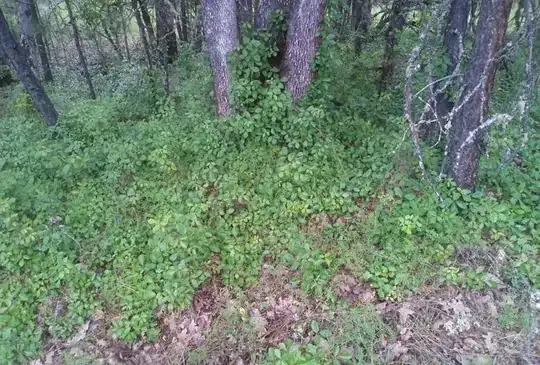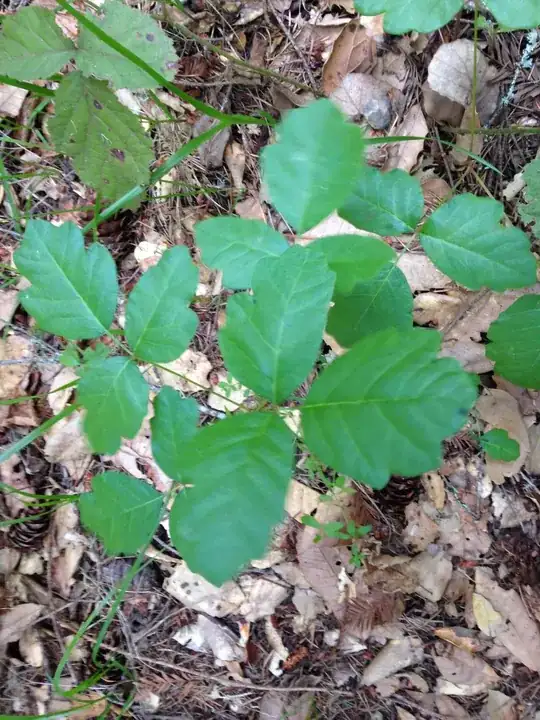In all its beautiful greenyness, yep, tender spring leaves.
Heck yeah, it's what Southern Oregon and Northern California grow best, more prolific than Wacky Terbaccy.
It varies from minimal to deeply lobular edges, the veins from fairly smooth to quite deep valleys in the leaf surface and the green color is from this pleasant hue to a deep waxy green with a pretty deep red highlight.
It grows from tiny bushlets like this to 30 foot high, arm thick vines that grows up into trees.
In all the variations, one identifier holds true. --> Leaves three, let it be!
Poison Ivy is a woody stemmed perennial that has similar toxicity with either smooth edged leaves or 2-4 sawtooth notches between stem and tip and the same three leaf cluster.
The Oregon state bush is the Oregon Grape, the State of Jefferson state bush would be Poison Oak. Image gallery below! Between Southern Oregon and Northern California, if you grow up eating the local honey, you probably won't be very allergic to Poison Oak, though you still will get a chemical burn from over-exposure. Our dogs rolled in it and we were pretty cavalier about being around it. We found out which of our friends were allergic a couple hours after they petted our dogs.
It is dual active, allergic people will have some pretty awful reactions way overboard from the simple red, itchy dots that the chemical burn from urushiol causes in non-allergic people.
Non-residents have to be aware that the lithe, whiplike branches do not make for good wiener roasting sticks. Over my lifetime here 5 different campouts resulted in hospitalization.
A washdown with Fels-Naptha soap or dishwashing detergent is immediately indicated to absorb and remove the urushiol oil which is the active ingredient.
So, I decided to take a walk for lunch and photograph the local flora...
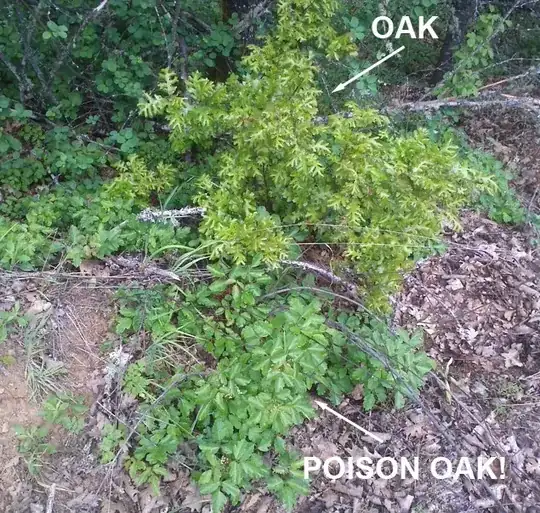
Variety of foliage and coloration, it can be quite pretty...
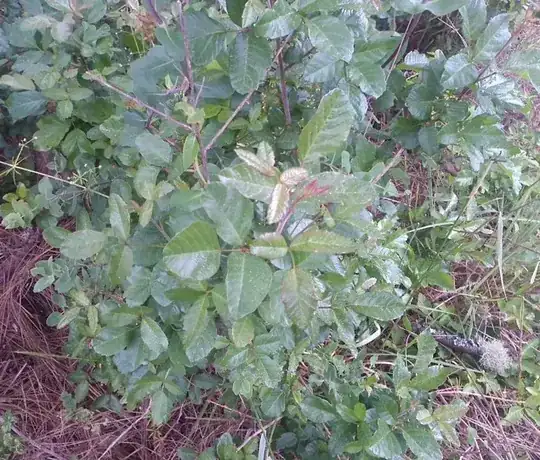
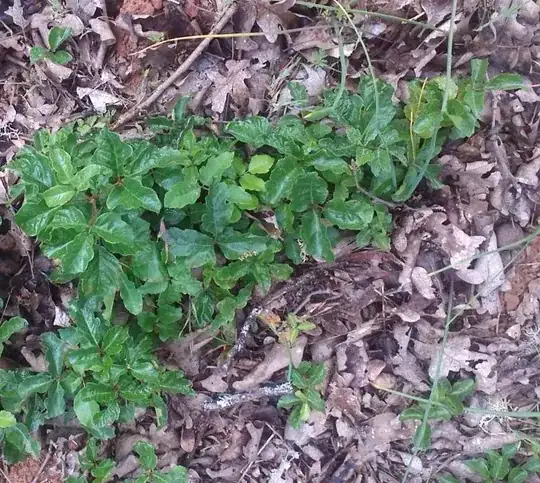
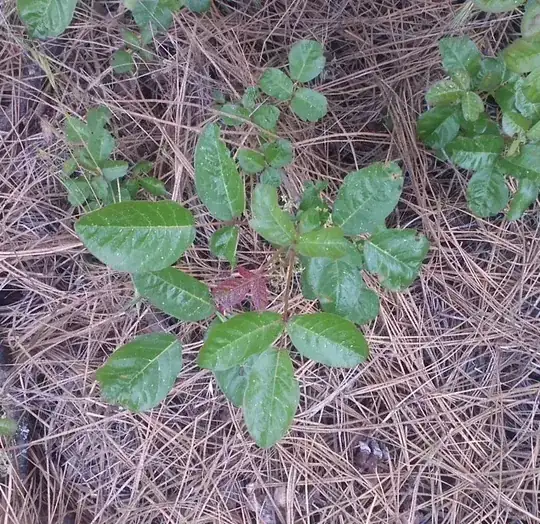
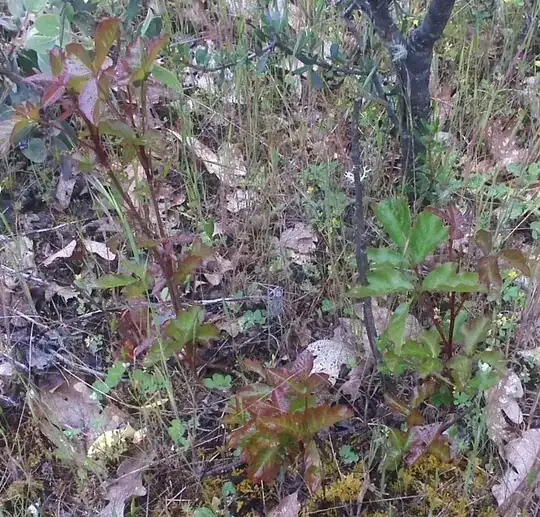
And Poison Oak grows everywhere, here at the base of and up a 75 ft Jeffery Pine as both shrub and climbing vine. I have another location I hiked into once where it climbed into 50 ft scrub oak. The vines were 3-4 inches in diameter.
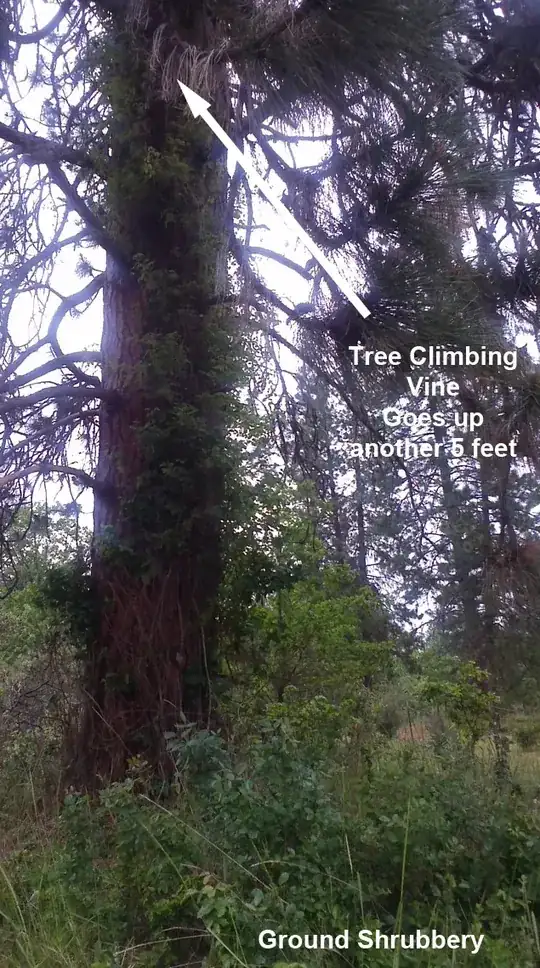
Where "I wish I'd Died Weiner Roasting Sticks" come from. The center ideal shoot is about 4 ft long, just ideal for the bonfire made from the local brush. Double deadly as you get your dose of Urushiol oil internally from the weiner and also breath it in vaporized from the smoke of the mix of brush you just built the bonfire out of... Not joking on this, it has happened.
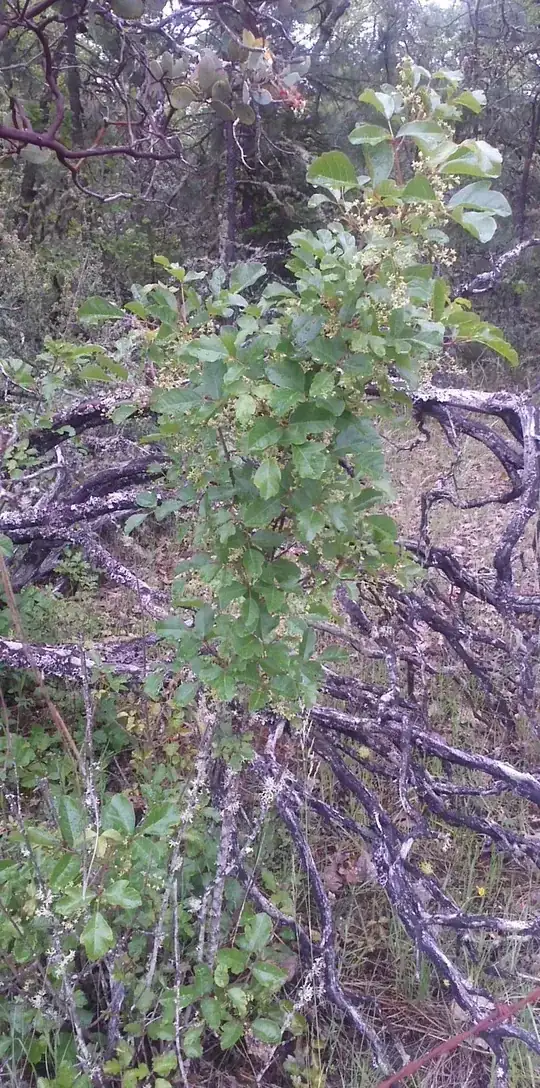
And an ending shot of how prolific this stuff is in Southern Oregon. We wandered through this stuff in the summer time shoeless and in shorts, getting the occasional brush across the leg and trodden ground hugger. There are far worse things here like the seed ticks in the area that carry Lyme Disease and other tick borne nasties.
